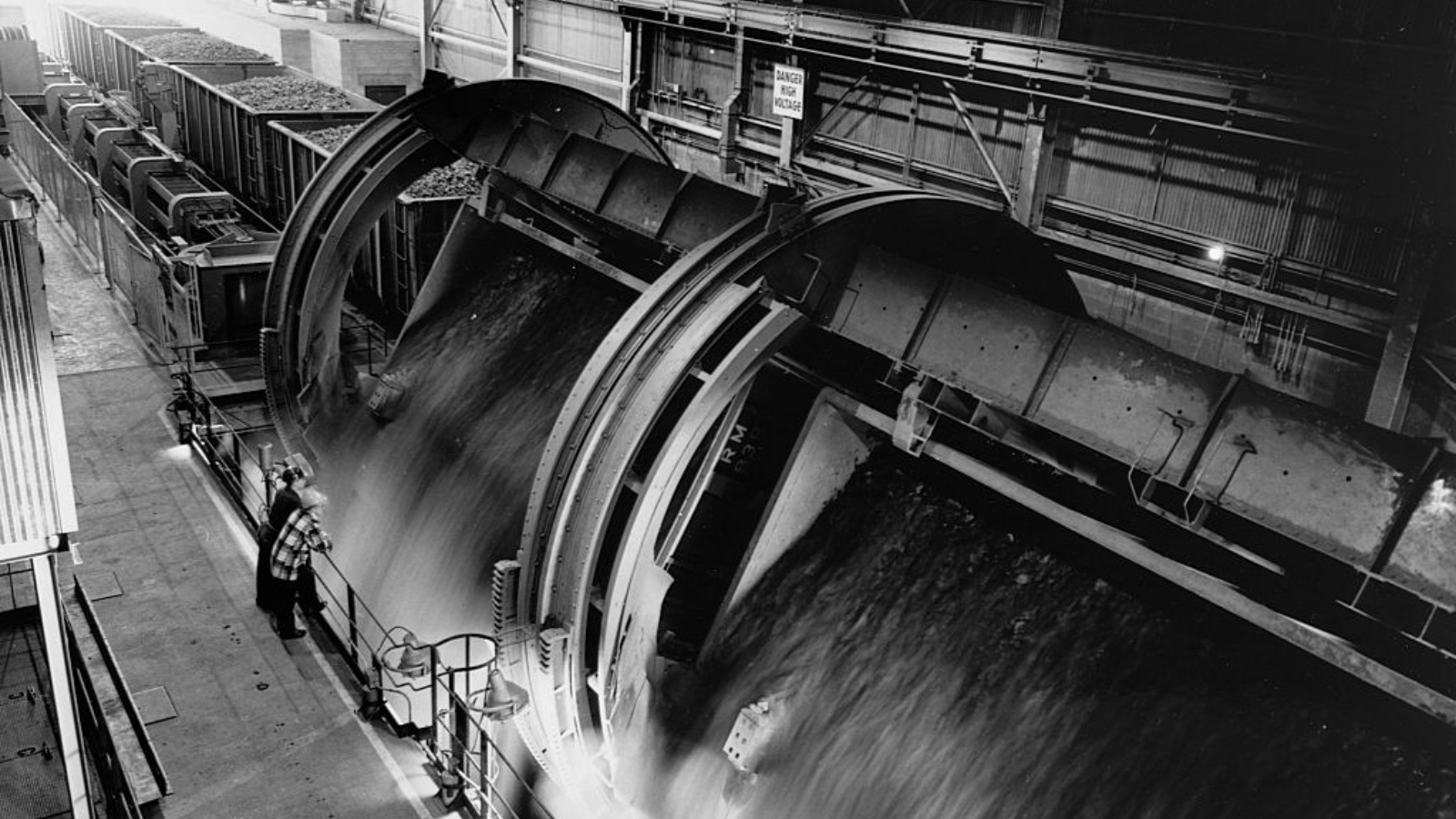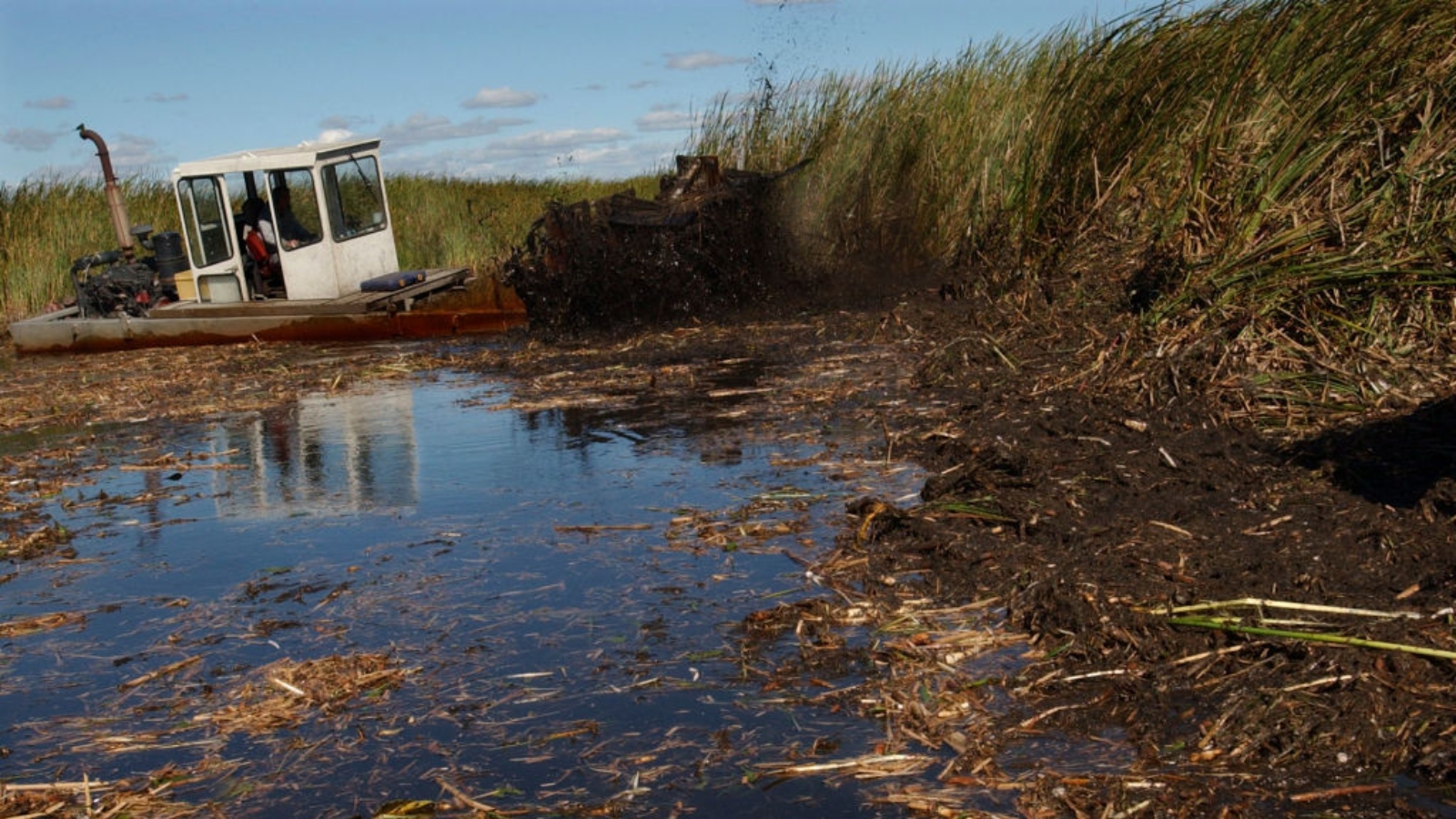Demand for steel is on the rise globally, driven by population growth and the expanding economies in developing nations. The material will also be important to the green energy transition, forming the backbone of infrastructure like wind turbines, solar panels, and hydroelectric dams. Every part of the steel supply chain is heavily polluting, and the places in the U.S. where the steel industry is concentrated are disproportionately low-income and nonwhite, highlighting yet another instance in which the promises of development and climate solutions come at a steeper cost for some communities. What’s more, the country’s steel production is dominated by just two companies: U.S. Steel and Cleveland Cliffs.
For both companies, much of their production begins with taconite, a low-grade iron ore mined in the northeast Minnesota’s Mesabi Iron Range, which is processed into pellets that get shipped to the steel mills of Gary, Indiana. The extraction of the ore from taconite rock releases a slew of toxic pollutants into the air, including mercury, lead, and dioxins. In this region, the most concerning of these emissions is mercury.
Studies have connected mercury to a litany of negative health effects. It’s a neurotoxin that can interfere with brain development in unborn children and an endocrine disruptor that can weaken the immune system. Scientists have yet to determine a quantity of mercury that is safe for human consumption. One recent study found that there is “no evidence” for a threshold “below which neuro-developmental effects do not occur.” And while the taconite industry releases less than a ton of mercury into the atmosphere every year, the metal is toxic in extremely small quantities: A fraction of a teaspoon can contaminate a 20-acre lake.
The nation’s six taconite plants, all in this region of Minnesota, are owned by U.S. Steel and Cleveland Cliffs. In May 2023, the Environmental Protection Agency proposed a regulation that would require the companies to cut their mercury emissions by around 30 percent. In order to meet that standard, the companies would have to install equipment that would inject carbon atoms into their industrial chimneys so that the carbon would attach itself to the mercury atoms, making the pollution particles bigger and allowing them to get trapped in a filter before they would be released into the atmosphere. The agency estimates that its regulation would cost the industry $106 million in capital costs and $68 million per year thereafter.
Last month, when the standards were finalized, both companies sued. They argue that the regulation would pose “irreparable harm” to the industry, because of the steep costs of implementation. They also argue that the EPA’s proposed method for reducing mercury pollution would actually be worse for public health, causing a 13 percent increase in the amount of the toxic metal deposited in the local environment.
“EPA is not only requiring industry to restructure its operations and build new pollution-control facilities at unprecedented costs, it is requiring facilities to commit to associated disruption of their current operations, spend hundreds of millions of dollars, and risk their productive capacity and, indeed, ability to operate completely, to design, permit, and install a technology with no demonstrated ability to actually work,” the companies wrote.
Jim Pew, a lawyer at Earthjustice who has litigated multiple lawsuits against the EPA for its failure to curb pollution from the taconite industry, pointed out that the costs of implementing the required equipment would be a tiny fraction of the companies’ annual sales, which totaled $40 billion in 2023. Pew noted that U.S. Steel recently initiated a $500 million stock buyback program, the mark of a healthy income revenue stream. As for the companies’ claim that the technology would increase mercury pollution, Pew called it “meritless.” The companies are “relying on a premise they know to be false” — that taconite plants would add the carbon technology without also improving their filtration system.
“I find this reprehensible and shameful,” Pew said. “While it’s claiming that it can’t spend money to clean up historic pollution, U.S. Steel is just handing out money to its shareholders.”
In an email, a spokesperson from U.S. Steel told Grist that the company’s lawsuit was meant to ensure that the EPA’s new regulations are “in line with sound science and regulatory procedures.” The spokesperson went on to say that the company had tested the available emissions-reduction technology at one of their plants in Minnesota and determined that it would not be in compliance with the mercury limits established by the agency. “We remain committed to environmental excellence, as do the nearly 2,000 hardworking men and women of our Minnesota Ore Operations.” Cleveland Cliffs did not respond to multiple requests for comment.
Pew sees the lawsuit as part of a multipronged attack by the steel industry against federal regulation. Over the past several years, the EPA has also proposed standards for the other types of facilities involved in steel production. These two companies have threatened litigation at every turn, recently petitioning a bipartisan group of lawmakers to send a letter to EPA Administrator Michael Regan, asking him to loosen the new standards for steel mills.

By the terms of the Clean Air Act, the EPA was supposed to propose standards to control toxic releases from taconite plants in 2003. When they failed to do so, environmental advocates from the Save Lake Superior Association and other groups sued the following year. In a federal circuit court, the EPA acknowledged that it had fallen short of its duties and promised to move with “all due process and speed” to fill the gaps in its regulations.
Years passed without a federal rule, and in 2007, Minnesota initiated an effort of its own, setting a standard for mercury pollution in water and, two years later, becoming the first state to develop a plan to achieve it. The standard required industries across the state to slash their emissions by a cumulative 93 percent, and over the following decade, power plants, crematoria, and other mercury emitters achieved major reductions. Emissions from the taconite industry, however, remained exceptionally high. Its share of the state’s total mercury releases jumped from 21 percent to 46 percent between 2005 and 2017.
Mercury contamination is particularly worrisome for tribal nations like the Fond du Lac Band, which fish and grow wild rice throughout the state’s vast network of rivers, lakes, and streams. “We find that across a lot of ceded territory, there’s a lot of good regulation but there’s been a lot of flexibility in enforcement,” said John Coleman, an environmental scientist at the Great Lakes Indian Fish and Wildlife Commission.
Tribes repeatedly petitioned the EPA to make good on its 2003 promise. They had good reason to be concerned: One study had found that 10 percent of babies born on the north shore of Lake Superior have elevated mercury levels in their blood.
It took the agency until last May to finally propose its regulation, which, of course, is under challenge. Still, for the tribes of northeast Minnesota, the EPA’s rule was a resounding disappointment. Even if U.S. Steel and Cleveland Cliffs reduce their mercury emissions by 30 percent, the companies’ operations would still allow hundreds of pounds of mercury to enter the state’s waterways each year.
“It is of our view that these proposed standards do not go far enough toward restoring and protecting the health and well-being of the environment and our community,” wrote Paige Huhta, the Fond du Lac’s air program coordinator in a letter to the EPA last July. She pointed out that the EPA itself had found that exposure among specific subpopulations, including some tribes, may be more than twice as great as that experienced by the average American. But when the agency finalized the rule this past March, it did not budge from its original reduction requirements.
“Water is an important part of the landscape up here,” said Nancy Shuldt, the Fond du Lac Band’s Water Projects Coordinator. “We have a water-rich landscape and water resources form the foundation of tribal lifeways.”
And because it is a metal, mercury does not break down into less toxic substances like other industrial pollutants. It stays in the environment for hundreds of years. In northeastern Minnesota, and to a specific group of people, much of the damage has already been done.
Editor’s note: Earthjustice is an advertiser with Grist. Advertisers have no role in Grist’s editorial decisions.




